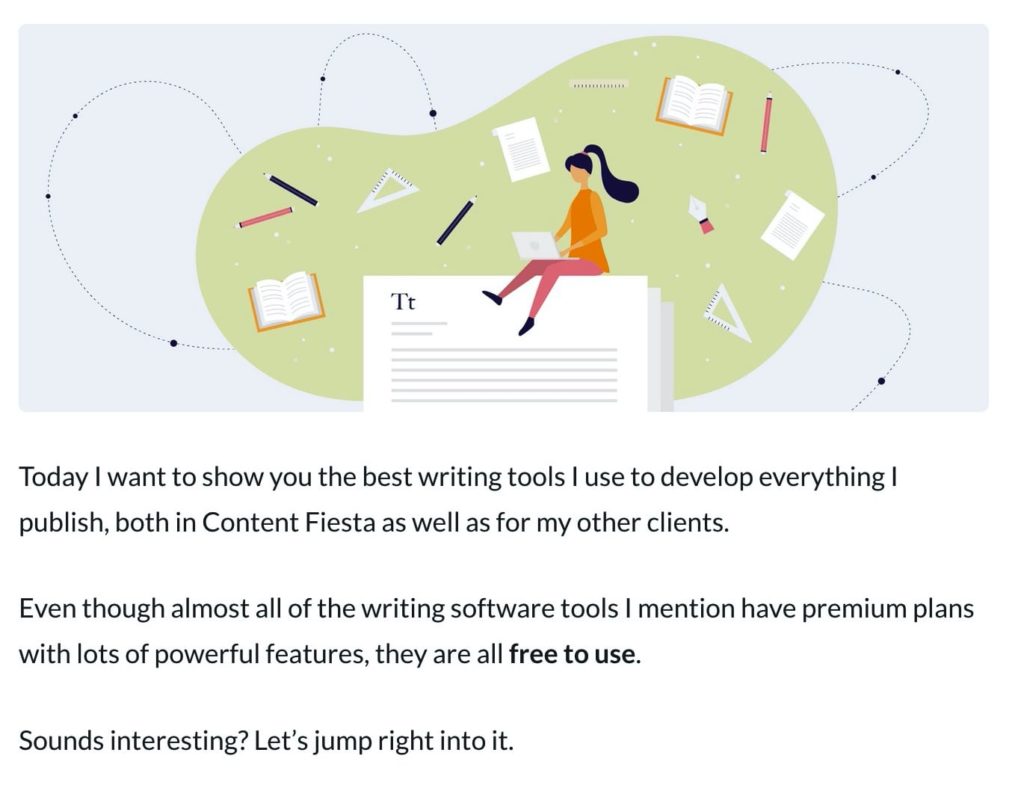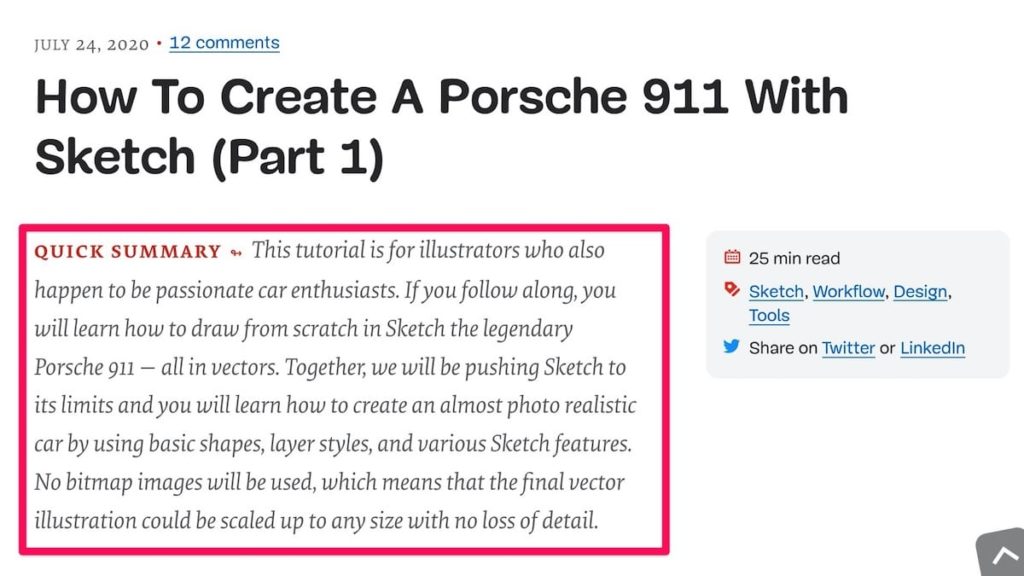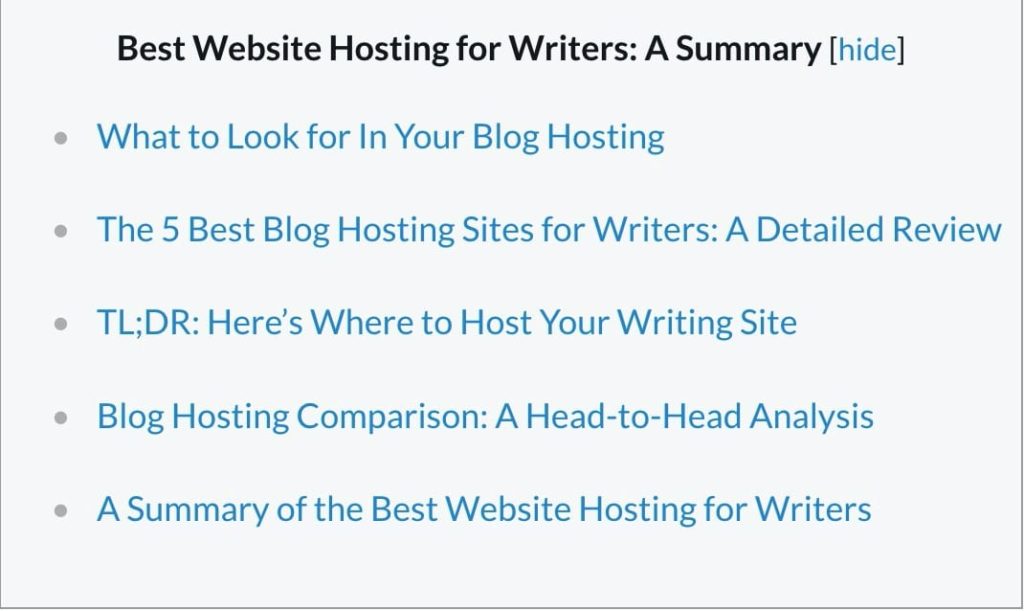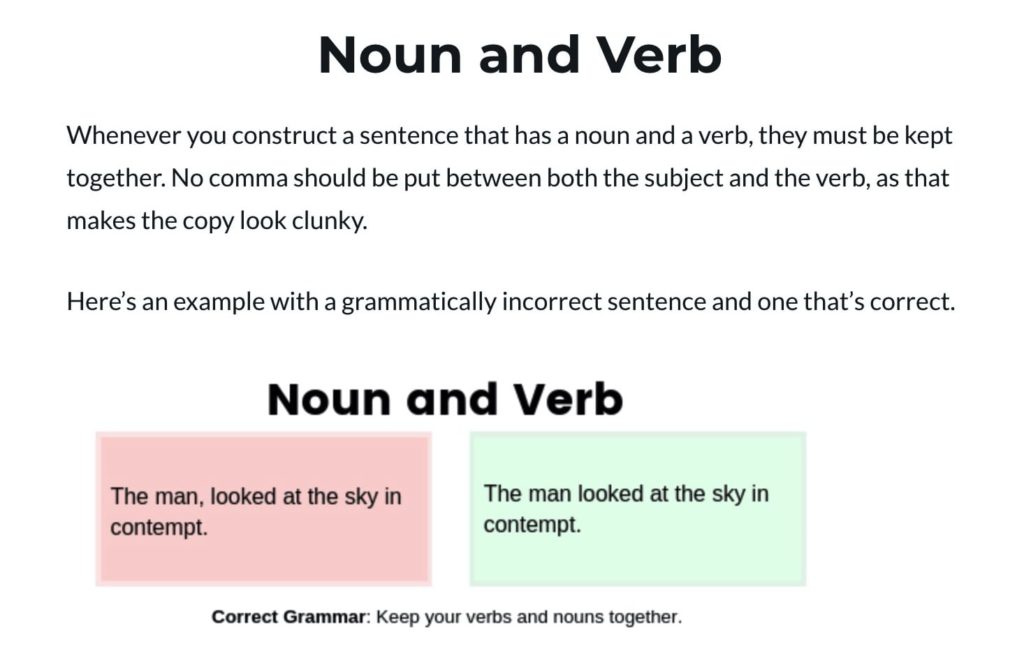Imagine you have spent over twenty hours, creating the most extensive, useful, and detailed guide on an essential topic for your audience.
You have poured your soul into it. You can imagine your audience going crazy over it.
Then, you publish it. And nothing happens.
Your audience ignores it. They don’t share it on social media. They don’t leave comments.
The readers aren’t engaging. With the time you have spent, you are broken-hearted.
If you don’t write engaging content, your content won’t deliver the desired results. Here’s how you can do it.
Write Magnetic Headlines
How do people find your content? Most likely, in either of the following ways:
- By finding it on Google.
- By finding it on their Facebook, Twitter, or LinkedIn feeds.
- By getting it recommended by one of their friends.
In this early stage, your audience doesn’t know your brand. When they see your content, they see:
- Its headline.
- Its description.
- Its URL.
- Its image (if they are on social media).
From these elements, the one that makes them click on your content is your headline. Your headline can stop your potential readers, spike their curiosity, and have them read your content. Without a great headline, your content is just a boring URL.
Your headline should act as a magnet that attracts clicks without overpromising what it can’t deliver. That is, it should be interesting but also realistic in what it promises. Clickbait for the sake of it isn’t acceptable.
The best headlines are often the simplest. A review piece I wrote on Grammarly exemplifies this idea perfectly; the title is, “Grammarly Review: Why It’s Worth It (With Some Caveats).” It explains what it is about—a product review—but it’s also intriguing—the caveats.
To write a magnetic headline, ask yourself, “what does my content do for my reader?” That’s the value it gives, and so it should be clearly stated in the headline.
Then, ask yourself, “how can I make the premise of the article clear for the reader?” This often comes down to using a headline formula. Some common examples include:
- How To [Achieve Your Reader’s Goal]
- Why You Need [Your Content’s Solution]
- X Ways to [Achieve Your Reader’s Goal]
- X Reasons Why You Need [Your Content’s Solution]
- X Steps to [Achieve Your Reader’s Goal]
For example, this article is called “How to Write Engaging Content Like a Professional Content Marketer” because it offers the same methods I use in my professional career as a content marketer. It’s clear, and it delivers the exact value the article has to offer.
Highlight the Premise of the Content
Getting a reader to click on your URL is only the beginning. After you got this initial spike of curiosity, you need to get them to read the rest of your content.
In this part, you want to hook your reader by explaining the premise of your content.
Ask yourself, “what is it for them”? The answer to the questions is most likely the same as the first question you asked yourself previously.
You want to highlight the value of your content right in the introduction. Put it in front of your readers as soon as possible so they can decide whether they want to read it. If they understand what they will get from reading your content, they will likely read the entire piece.
It’s essential that when you write your introduction, you assume the reader knows they have a problem. Content marketers often spend too much time explaining the issue their content solves, as if their readers didn’t know they had a problem.
For example, in an article I wrote about my favorite writing tools, I spent three short paragraphs that go right to the point. I didn’t explain what writing tools are or why my reader needs them—if they searched for “writing tools” in Google, they know they want to learn about the topic. All they want is to see writing tools, that’s all.

Think about it: if your reader clicked on your content’s title, they know they have a problem. In the introduction, they want to see what you will give them to help them solve it.
Write your introduction by mentioning their problem and the solution you offer throughout the rest of your piece.
Make Your Content Readable
After you get your reader hooked, you need to ensure their reading experience is optimal. To avoid having a reader click away, open a new tab, or close their browser and move on with their lives, you need to make your content readable.
People skim most of the content—this means they don’t read word–by–word—but by glancing over and seeing the most essential parts.
Therefore, your content has to be skimmable; it has to be prepared for your readers to consume quickly.
One way you can do so is by adding a summary. You can do it either at the beginning of your piece or in each of the sections.

You can also add a table of contents. They are perfect for long articles that have numerous sections and that need organization.
That is what I use in all of my articles, like this one on the best blog hosting companies. Since it’s over 6,000 words, most readers will enjoy going to each of the hosting sites that interest them faster.

As a WordPress user, you can use a plugin like Table of Contents Plus to add a simple table of contents in your articles. It’s both free and easy to install and customize.
Finally, break your content with headlines, sub-headlines, and bullet points. They allow for an easier reading experience.
Add Multimedia
Content alone can bore the reader. Adding multimedia elements, like images, infographics, and videos, can reduce the friction and rekindle their interest.
Visual elements illustrate your ideas, making it easier for the reader to understand them.
In an article I wrote on common grammatical errors writers make, I didn’t just explain what these errors were; I added images that compared the right construction with the wrong one.

The images you use should always connect with your content. Avoid using stock images and other irrelevant images that have nothing to do with your ideas.
Rand Fishkin became famous through his “Whiteboard Friday” videos, where he used a whiteboard to present an idea or issue. The mix of video with written content—the transcriptions of his talks—made his content easier to consume.
Tell Stories
No matter how data-driven or multimedia-rich your content may be, your content will look flat and dull without stories.
Stories drive everything we do. It’s what causes people to work for a company, learn a skill, and sacrifice for a belief. Your content should embed stories as much as possible.
To create stories on the fly, you can use a writing technique I call the “SIC formula.”
- Start with a situation that explains the background and characters of the story.
- Build interest by explaining what happened with your characters and how the problem developed.
- Finish with a conclusion that explains how the characters solved the problem.
Your stories will make your content more relatable and human. It will transform it into a multidimensional experience that’s not just filled with facts and solutions, but with a narrative that moves them.
You can use anecdotes, fictional narratives, or personal stories to foster the imagination of the reader.
Start Writing More Engaging Content
Next time you write content, make sure it’s not just long or useful, but engaging.
Start by writing great headlines that attract the reader. Then, hook them with an exciting introduction. Format your content to make it easy to consume. Add graphics and stories to make it more relatable and easier to understand.
Next time you publish a piece of content, your audience will engage with it as you have never seen before.
DepositPhotos – content writer


